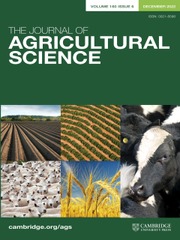No CrossRef data available.
Article contents
Evaluating the accuracy – labour trade-off between alternative grassland monitoring methods by rising plate meters
Published online by Cambridge University Press: 25 September 2025
Abstract
Production efficiency of pasture-based livestock production systems is primarily driven by the level of pasture utilisation, and, as such, regular monitoring of herbage mass (HM) provides essential information to assist on-farm decision making. Unfortunately, this practice is seldom carried out on commercial farms, likely due to the time commitment required across the entire grass-growing season. Recent studies have shown, however, that even moderately inaccurate HM data can improve the system-side profitability compared to enterprises with no data, warranting further investigations into the trade-off between the accuracy and cost associated with HM measurements. Using a weekly multi-paddock dataset from the North Wyke Farm Platform research site in Devon, UK, this study evaluated the technical validity and labour-saving potential of a simplified ‘pasture walk’ protocol for rising plate meters, under which only data along the diagonal transect – rather than the industry-standard W-shaped pathways – of the paddock are collected. Across 234 temporal-paddock combinations, the mean absolute difference in HM estimates between diagonal and W-transects was 106 kg DM/ha, a scale far too small to alter sward or animal management. The presented statistical analysis, together with a supplementary spatial simulation experiment, supported the generality of the findings across the full grass-growing season. With a 51.2% reduction in labour time (1.2 min/ha rather than 2.5 min/ha) across paddocks of various sizes and shapes, the proposed method is likely to facilitate uptake of evidence-based grazing management amongst farmers who currently do not quantify HM at all.
Information
- Type
- Crops and Soils Research Paper
- Information
- Copyright
- © The Author(s), 2025. Published by Cambridge University Press


